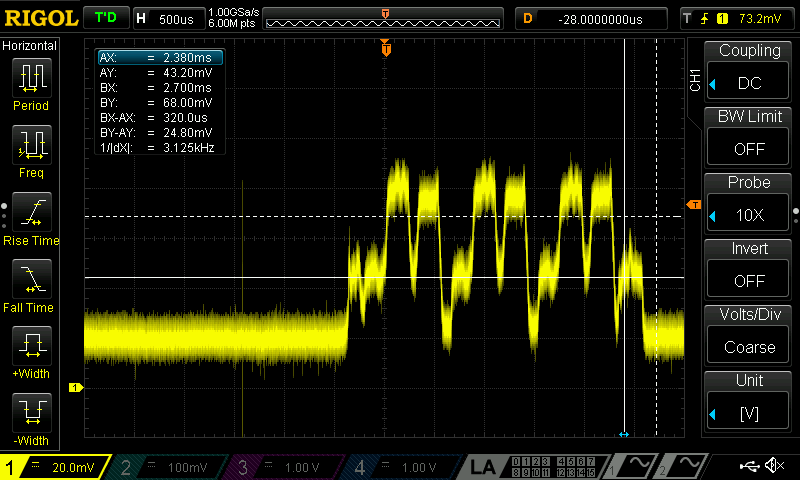We get a fairly high static current on CC2650 (chip id 2550 XC41 AYC2 G4) using Simple BLE peripheral (with the modification recommended in SWRA478. This measurement is done on SmartRF06 + 7ID evaluation board.
Here is what we've done:
1. comment out Util_startClock(&periodicClock);
2. Remove TI_DRIVERS_LCD_INCLUDED define.
3 define DEFAULT_ENABLE_UPDATE_REQUEST FALSE
(power saving is defined) and the default power saving policy is untouched as follows:
var Power = xdc.useModule('ti.sysbios.family.arm.cc26xx.Power');
/* Enable idle task (default). */
Task.enableIdleTask = true;
/* Idle CPU when threads blocked waiting for an interrupt */
Power.idle = true;
Power.policyFunc = Power.standbyPolicy;
Then compile the project using the following setup:
CC26XXWARE = C:\ti\tirtos_simplelink_2_13_00_06\products\cc26xxware_2_21_01_15600
ORIGINAL_PROJECT_ROOT = C:\ti\simplelink\ble_cc26xx_2_01_00_44423\Projects\ble\SimpleBLEPeripheral\CC26xx\CCS\SimpleBLEPeripheral
TI_RTOS_DRIVERS_BASE = \tirtos_simplelink_2_13_00_06\packages
XDC: 3.31.1.33
We get a DC component of 3.5mA + tx/rx current spike when all jumpers are removed.
The way we measure it is slightly different from the application note as the amplifier U504 is not fitted on the RF06 board we received. So we just used 10 ohm resistor to connect the 2 pins of VDD-EM jumper and then use a cro to measure the voltage on the resistor.
We check the following threads:
The following register values are observed:
AUX_DDI0_OSC.CTL0.SCLK_LF_SCR_SEL = 0x3 (XOSC_LF)
AUX_DDI0_OSC.STAT0.SCLK_LF_SRC == 0x3 (XOSC_LF)
in ccfg.c the folowing config is used:
#define SET_CCFG_MODE_CONF_SCLK_LF_OPTION 0x2 // LF XOSC
//#define SET_CCFG_MODE_CONF_SCLK_LF_OPTION 0x3 // LF RCOSC
Questions are:
1. is the above register value as expected? [Note using 0x3 for SET_CCFG_MODE_CONF_SCLK_LF_OPTION makes no difference].
2. Do you have a specific version that current measurement works as expected or does it work across all releases (rtos+cc26xx aware)? If not all works, do you have a combo that works for sure?
3. What else could we have missed so that we cannot get the measurement right?
We tried on our own dev board (without connecting any GPIO pins but with 4x4 form factor) and got similar result. That's why we switched to RF06 and surprisingly find it also has high static current.Your kind help is greatly appreciated.
Regards,
Lichang


